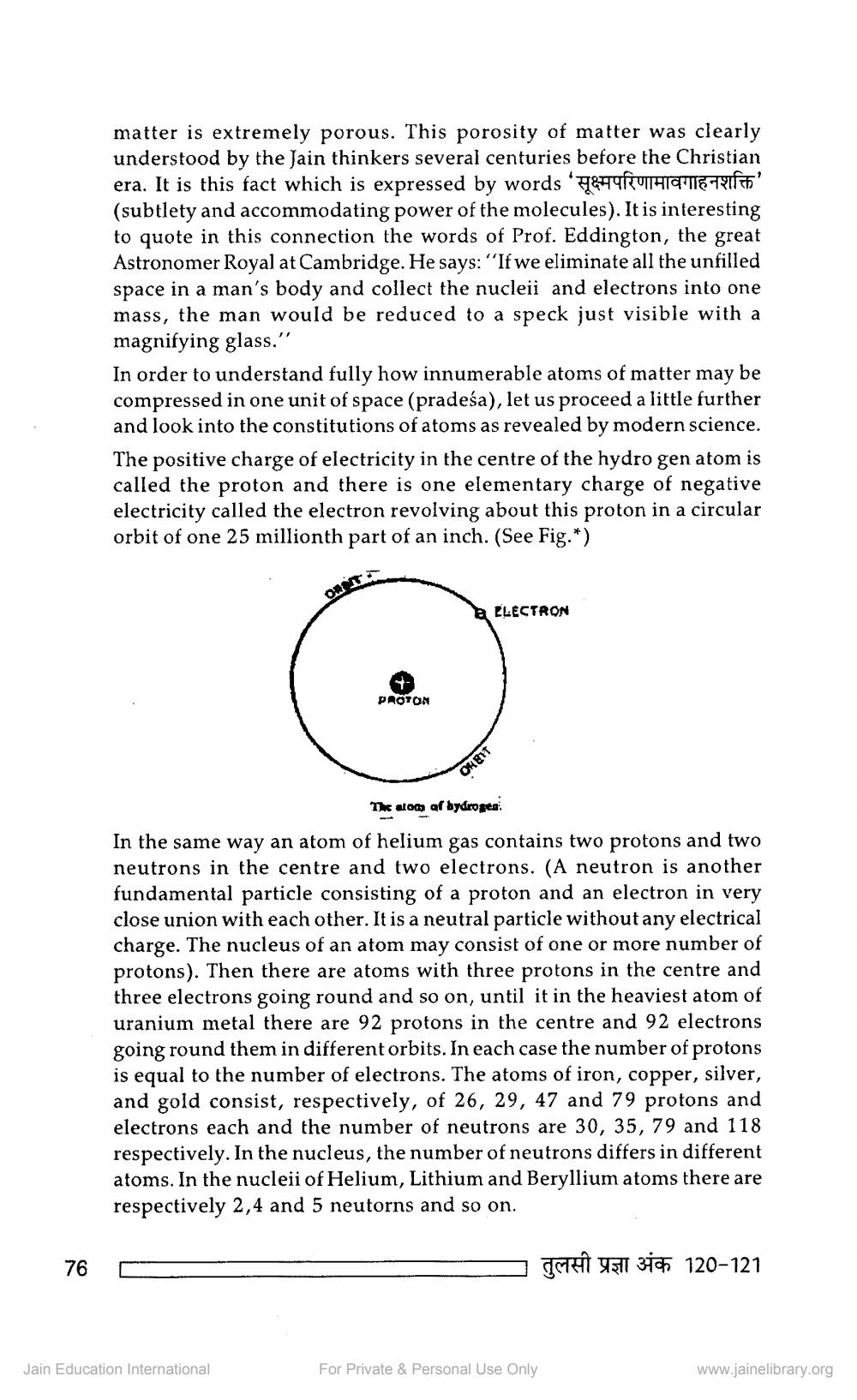________________
matter is extremely porous. This porosity of matter was clearly understood by the Jain thinkers several centuries before the Christian era. It is this fact which is expressed by words 'TUTTET (subtlety and accommodating power of the molecules). It is interesting to quote in this connection the words of Prof. Eddington, the great Astronomer Royal at Cambridge. He says: ''If we eliminate all the unfilled space in a man's body and collect the nucleii and electrons into one mass, the man would be reduced to a speck just visible with a magnifying glass." In order to understand fully how innumerable atoms of matter may be compressed in one unit of space (pradeśa), let us proceed a little further and look into the constitutions of atoms as revealed by modern science. The positive charge of electricity in the centre of the hydro gen atom is called the proton and there is one elementary charge of negative electricity called the electron revolving about this proton in a circular orbit of one 25 millionth part of an inch. (See Fig.*)
ELECTRON
PROTON
OKENT
The atom af hydrogen
In the same way an atom of helium gas contains two protons and two neutrons in the centre and two electrons. (A neutron is another fundamental particle consisting of a proton and an electron in very close union with each other. It is a neutral particle without any electrical charge. The nucleus of an atom may consist of one or more number of protons). Then there are atoms with three protons in the centre and three electrons going round and so on, until it in the heaviest atom of uranium metal there are 92 protons in the centre and 92 electrons going round them in different orbits. In each case the number of protons is equal to the number of electrons. The atoms of iron, copper, silver, and gold consist, respectively, of 26, 29, 47 and 79 protons and electrons each and the number of neutrons are 30, 35, 79 and 118 respectively. In the nucleus, the number of neutrons differs in different atoms. In the nucleii of Helium, Lithium and Beryllium atoms there are respectively 2,4 and 5 neutorns and so on.
76
IN
U511 3ic
120-121
Jain Education International
For Private & Personal Use Only
www.jainelibrary.org




